There are a number of irritating plants that can cause rashes, burning and pain on contact with skin. Find out about poisonous weeds and keep an eye out for them the next time you’re outdoors. Be sure to visually inspect the plant if you are asked to determine whether or not it is poisonous. If you are not wearing gloves, you should not touch anything at all. You only have to come into contact with one of these rash-causing plants to realize that you should always wear gloves and long sleeves when working in your garden. These species are dangerous for humans and animals and must be fought!
Poisonous weeds in the garden – spotted hemlock (Conium maculatum)
The fringed leaves of spotted hemlock can easily be mistaken for parsley, which is a very risky mistake when consuming the leaves. If you discover weeds on your property, you should carefully remove them and take appropriate safety measures. The plant toxins can be absorbed through the skin.
The Giant Bear Claw (Heracleum mantegazzianum)
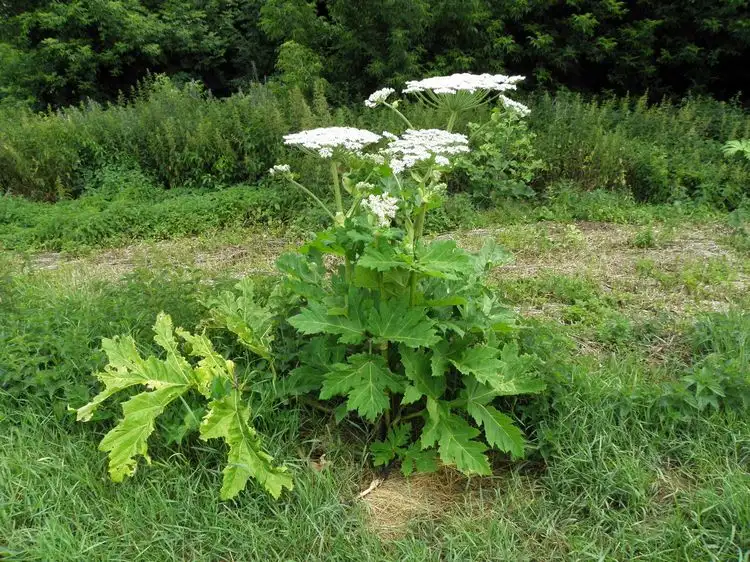
Bear’s hogweed is a troublesome, invasive species found throughout Germany. You may have heard of this invasive species because of its horrible effects on the skin. Phytophotodermatitis, which can be caused by the sap of the leaves of giant hogweed and hogweed (H. sphondylium), is at the root of the ailments associated with these plants. This chemical reaction takes place after the sap has been exposed to sunlight and comes into contact with the skin. As a result, painful blisters form on the skin’s surface, which are severe. The blisters can often persist for months, and the affected area can eventually become photosensitive for a long time. The plant can also cause blindness if it comes into contact with the eyes.
These plants can grow 4 to 6 m tall and have leaves that can be up to 1.5 m wide. They are related to carrots and parsley and belong to the same family. The sturdy stems bear umbrella-shaped flowers.
Poisonous Weed for Dogs, Cats, Rabbits and Humans – Datura (Datura)
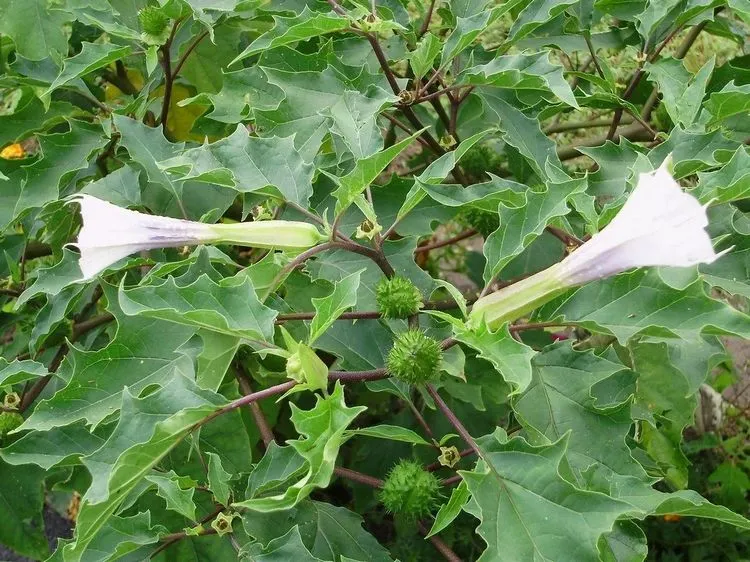
The flowering plant belongs to the nightshade family and is known as datura. This wild plant may have originated in Central America, but also grows in Europe from May to September. The plant is poisonous and the seeds contain alkaloids that can be fatal if ingested. Datura produces white or purple trumpet-shaped flowers followed by prickly fruits.
The American pokeweed (Phytolacca americana)

American pokeweed is a perennial with fluffy clusters of white flowers that eventually turn into bright berries that attract many bird species. You can experience symptoms like nausea and vomiting, as well as internal bleeding if you touch any part of this plant, especially the roots. To make matters worse, pokeweed is a noxious weed and difficult to remove. For the best chance of success, you should get rid of the weeds on your property immediately.
buttercup (Ranunculaceae) toxic to humans and animals
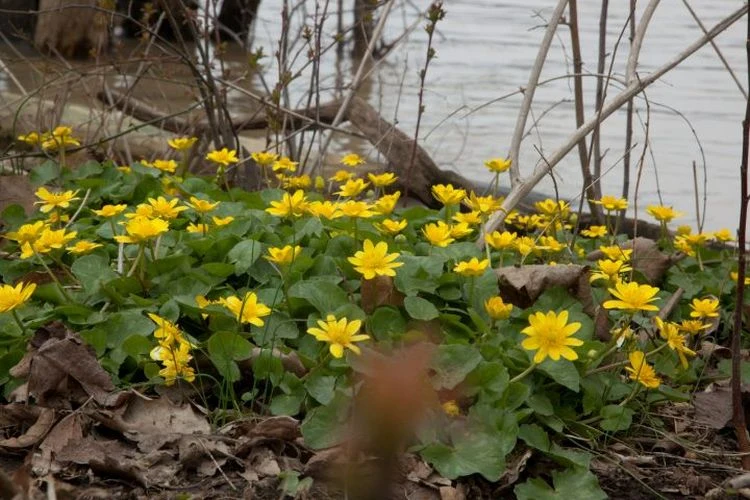
Each individual buttercup species contains toxins that are harmful to humans and animals. When buttercup leaves are crushed or damaged, a substance known as ranunculin is released. This ranunculin is eventually broken down into an oil that is bitter and toxic called protoanemonin. Contact with protoanemonin can cause symptoms similar to dermatitis, including intense burning and itching, as well as a rash and blisters. Blisters have been observed to form on the lips and face of people and animals who have nibbled on the leaves. In addition, the toxic oil is severely irritating to the eyes. If you ingest this plant, you can end up in a world of mischief, with symptoms such as stomach upset, diarrhea and vomiting, dizziness, and even paralysis.
Yellow buttercups can vary in toxicity, but generally individual plants are at their most dangerous in the spring when they are actively growing and flowering.
Yellow Poisonous Weed – Ragwort (Jacobea vulgaris)
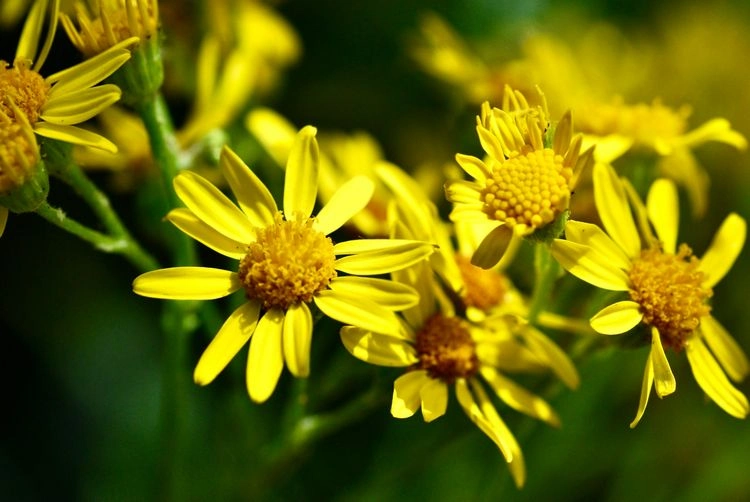
Ragwort is a danger to animals. In recent years there have been more and more cases of poisoning in agriculture, especially in horses and cattle. Regular consumption of Jacobaea vulgaris can permanently damage the liver, preventing it from performing its normal functions. This leads to liver disease and can be fatal.
Ambrosie (Ambrosia artemisiifolia)
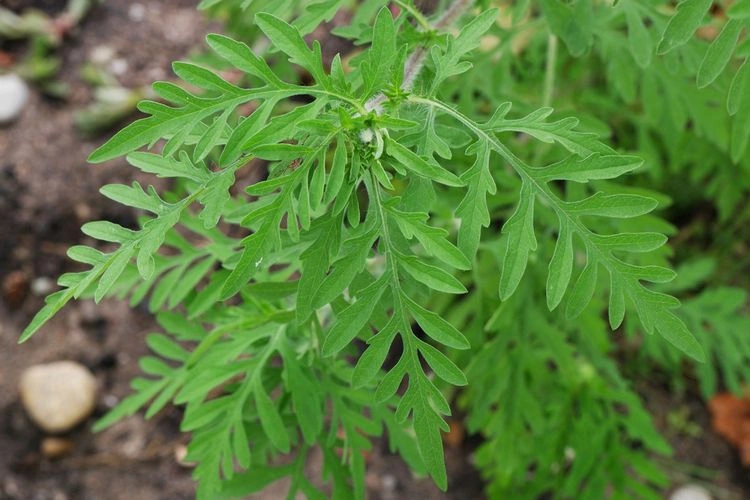
Ragweed is an annual weed that belongs to the Asteraceae (daisy family) family. It is the allergen responsible for causing hay fever, contact dermatitis and allergies. Ragweed is very tolerant of drought and poor soil conditions and prefers full sun. In late summer and early fall, the male flowers produce large amounts of pollen, which is then carried away by the wind. This creates a large number of seeds that can survive for many years.